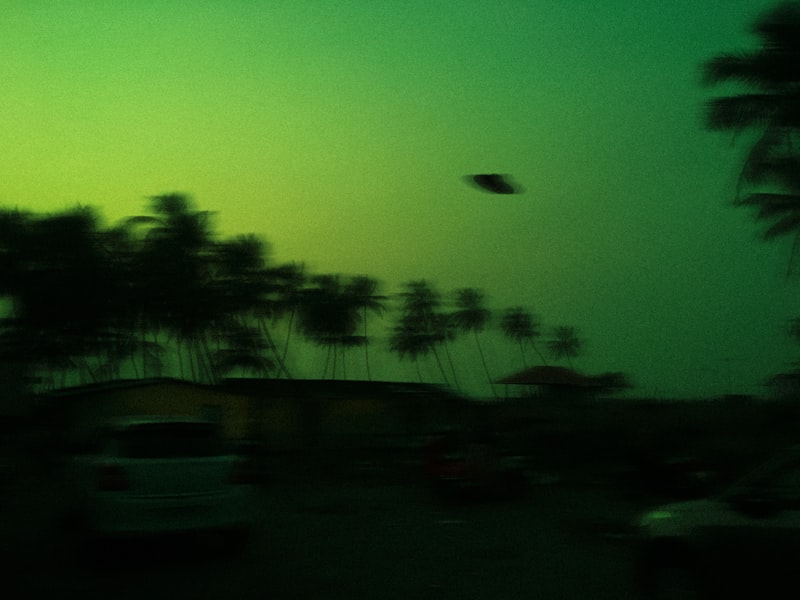Imagine diving into the depths of the ocean, where the vibrant tapestry of marine life unfolds before your eyes. Among the many wonders that inhabit these waters are marine invertebrates that seem to defy earthly logic – they appear straight out of a sci-fi movie rather than the ocean floor.
One such creature is the Mantis Shrimp, a small but mighty warrior of the sea. With claws that can strike with the speed of a bullet, this alien-like creature has fascinated scientists and divers alike. Its ability to perceive colors beyond the visible spectrum of humans adds to its mysterious aura, almost as if it sees a world we can only imagine.
Moving along the ocean bed, you might encounter the Dumbo Octopus, named after the famous Disney character for its ear-like fins that resemble Dumbo’s ears. Unlike its more common relatives, this deep-sea dweller glides gracefully using these fins, resembling an otherworldly visitor exploring its own alien landscape.
Delving deeper still, we find the Venus Flytrap Sea Anemone, a predator of the sea that ensnares its prey with tentacles reminiscent of a carnivorous plant. Its adaptation to capture and consume fish and crustaceans showcases nature’s inventiveness in creating creatures that blur the lines between flora and fauna.
Another bizarre inhabitant of the ocean depths is the Basket Star, a creature that sprawls its intricate arms like a celestial formation. Its ability to unfurl its arms to catch passing prey makes it a formidable predator despite its ethereal appearance, reminding us that beauty and danger often coexist in nature’s design.
As we explore these alien-like marine invertebrates, we are reminded of the vast and mysterious world that lies beneath the ocean’s surface. Each creature, with its unique adaptations and behaviors, adds to the richness of our understanding of life on Earth, and perhaps beyond.
Exploring the Deep: Unveiling the Bizarre World of Alien-Like Marine Invertebrates
Imagine encountering the otherworldly magnificence of the blanket octopus. Unlike its cousins, this creature flaunts extravagant webbing between its tentacles, resembling a billowing cape as it gracefully navigates the ocean currents. With females reaching sizes up to six feet, adorned with venomous spikes for defense, the blanket octopus is a testament to the unexpected forms life can take beneath the waves.
In the depths, the deep-sea anglerfish reigns supreme as a master of deception. Females sport a bioluminescent lure atop their heads, attracting unsuspecting prey closer to their gaping jaws. These fish epitomize the ingenuity of evolution in extreme environments, where food is scarce and adaptability is paramount.
Meanwhile, the flamboyant cuttlefish dazzles with its chameleon-like ability to change color and texture in an instant, hypnotizing both prey and potential mates alike. With large, W-shaped pupils and undulating movements, it’s no wonder these creatures have captured the imaginations of scientists and divers alike.
Venture deeper still, and you may encounter the psychedelic sea slug, with its vivid hues and intricate patterns. These mollusks have evolved to absorb toxins from their prey, turning them into a vibrant display of warning colors—a testament to their poisonous potential.
The ocean, with its uncharted depths and alien-like inhabitants, continues to surprise and inspire. From the depths of the midnight zone to the coral reefs teeming with life, each creature plays a vital role in the complex ecosystem that sustains our planet. As we unravel the mysteries of these alien-like marine invertebrates, we gain a deeper appreciation for the wonders of the natural world that lie just beneath the surface.
From the Abyss: Strange Creatures That Resemble Aliens Found in Earth’s Oceans
One such creature is the barreleye fish, with its transparent head revealing barrel-shaped eyes that point upwards to detect prey silhouetted against the faint light filtering down from above. Its appearance is straight out of a science fiction tale, yet it thrives in the deep-sea pressures where few other creatures can survive.
Further down, in the cold waters near hydrothermal vents, lives the Pompeii worm. This extremophile withstands temperatures that would instantly kill most organisms, clinging to chimney-like structures where superheated water gushes forth. Its resilience and bizarre appearance, covered in hair-like structures that protect it from the searing heat, make it a testament to life’s adaptability in the harshest environments on Earth.
Venturing deeper still, into the midnight zone where sunlight never reaches, we encounter the vampire squid. Despite its ominous name, this creature is more akin to a gentle phantom of the deep, using bioluminescent organs to create hypnotic displays or to ward off predators. Its appearance, with webbing between its arms that resembles a cloak, adds to its mystique.
These strange denizens of the ocean depths remind us that our planet harbors mysteries as profound as any found in the cosmos. They challenge our understanding of life and adaptation, offering glimpses into how life might exist in the extreme conditions of other planets or moons in our solar system. As we continue to explore and study these alien-like creatures, we may yet uncover more secrets of Earth’s oceans and perhaps find clues to the origins of life itself.
Meet the Oddities: Alien-Like Marine Invertebrates That Defy Imagination

Imagine a world beneath the waves where creatures seem plucked from the pages of science fiction. Alien-like marine invertebrates inhabit our oceans, fascinating and baffling scientists and enthusiasts alike. These extraordinary beings, although lacking backbones, showcase a diversity that rivals any extraterrestrial landscape.
Take the mysterious yet mesmerizing blanket octopus, known for its dramatic appearance and unique defense mechanisms. Picture this creature: gracefully drifting through the ocean, adorned with flowing webs of skin that resemble ethereal capes. It’s a sight that leaves even seasoned divers awestruck, evoking comparisons to mythical beings from ancient legends.
Then there’s the bizarre yet beautiful sea slug known as the Spanish Dancer. Contrary to its delicate appearance, this creature possesses a potent defense mechanism: it can release a toxic substance when threatened, stunning predators and photographers alike with its vibrant colors and graceful dance-like swimming.
Delve deeper into the abyssal depths, and you might encounter the enigmatic vampire squid. Despite its ominous name, this creature is more a marvel of evolution than a fearsome predator. With its jet-black skin and bioluminescent capabilities, it inhabits the murky depths, surviving in conditions that would crush most other beings.
Not to be outdone, the flamboyant cuttlefish stands as a testament to nature’s penchant for artistry. Masters of disguise, these cephalopods can change color and texture in an instant, creating mesmerizing displays to communicate, attract mates, or evade predators. Their ability to camouflage seamlessly among coral reefs and sandy bottoms illustrates a blend of intelligence and adaptability rarely seen in the animal kingdom.
These alien-like marine invertebrates remind us of the boundless creativity of evolution. Each species, from the ethereal blanket octopus to the flamboyant cuttlefish, offers a glimpse into a world where imagination and reality blur beneath the waves. As we continue to explore and understand our oceans, these creatures serve as a reminder that there is still much to discover in our own blue planet.
Underwater Wonders: The Top 10 Most Alien-Like Marine Invertebrates
-
Mimic Octopus: Known for its extraordinary camouflage abilities, the mimic octopus can impersonate various marine animals, including lionfish, flatfish, and even sea snakes. It’s a master of disguise, using its shape-shifting skills to evade predators.
-
Giant Isopod: Resembling a massive pill bug, the giant isopod dwells in the deep sea and can grow up to sizes exceeding 16 inches. Its armored exoskeleton helps it survive the extreme pressures of the ocean depths.
-
Basket Star: This intricate creature unfolds its branching arms like a living basket, capturing plankton and small fish in its intricate mesh of arms. Found in deep-sea habitats, it’s a marvel of biological engineering.
-
Vampire Squid: Despite its ominous name, the vampire squid is more of a gentle drift dweller. It has large eyes and webbing between its tentacles, giving it a ghostly appearance as it navigates the dark depths.
-
Bobbit Worm: Named after Lorena Bobbitt due to its predatory prowess, this worm buries itself in the sand, waiting to ambush passing prey with its sharp mandibles. It’s known for its lightning-fast strikes.

Sea Pen: Resembling an old-fashioned quill pen, the sea pen is a colonial organism that anchors itself to the seafloor. It filters food from the water using tiny polyps along its feathery structure.
-
Comb Jelly: These gelatinous creatures propel themselves through the water with rows of iridescent cilia, refracting light in mesmerizing patterns. They are a prime example of the beauty found in simplicity.
-
Hairy Frogfish: Camouflaged to resemble seaweed, the hairy frogfish lures prey with its worm-like lure before engulfing it with a lightning-fast strike. Its unusual appearance and hunting strategy make it a standout.
-
Flamboyant Cuttlefish: Vibrant in coloration, this small cuttlefish species walks along the ocean floor using its tentacles. It displays dramatic color changes to warn predators of its toxic nature.
-
Barreleye Fish: With its transparent head revealing its tubular eyes that can rotate within its transparent shield, the barreleye fish is perfectly adapted to see in the dimly lit depths where it resides.
These astonishing marine invertebrates showcase the incredible diversity and adaptability of life beneath the waves. Each one is a testament to the wonders of evolution and the mysteries that still await discovery in our oceans.
Beyond Science Fiction: Discovering the Real-Life Alien Creatures of the Deep Sea
Imagine plunging into the mysterious depths of the ocean, where reality often outstrips the wildest imaginations of science fiction. The deep sea, largely unexplored and enigmatic, holds a treasure trove of creatures that seem straight out of another world. These alien-like beings, adapted to survive in extreme conditions of darkness, pressure, and cold, continue to astonish scientists and deep-sea explorers alike.
One of the most intriguing inhabitants of these abyssal depths is the anglerfish. Known for its bizarre appearance, the female anglerfish sports a luminescent lure dangling from its head, which it uses to attract prey in the darkness. This adaptation not only helps it survive but also highlights the ingenuity of nature in creating survival strategies where light seldom reaches.
Equally fascinating are the deep-sea squids, such as the colossal squid and the vampire squid. The colossal squid, with eyes the size of dinner plates, prowls the depths with its powerful tentacles, embodying both grace and ferocity in its elusive habitat. On the other hand, the vampire squid, despite its ominous name, uses bioluminescence to escape predators by emitting a dazzling light show.
Delving deeper into the abyss, we encounter the barreleye fish, whose transparent head provides a window into its extraordinary sensory world. With upward-facing eyes and a tubular structure, it navigates the depths with a panoramic view, capturing prey with remarkable precision.
In contrast, the dumbo octopus gracefully floats above the seabed, its ear-like fins resembling the beloved Disney character. This deep-sea marvel embodies both elegance and adaptability, demonstrating nature’s ability to fashion beauty in the most inhospitable environments.
Frequently Asked Questions
What unique features do alien-like marine invertebrates possess?
Learn about the unique features of alien-like marine invertebrates, including bizarre body shapes, extraordinary adaptations to extreme environments, and unconventional feeding strategies.
What are some examples of alien-like marine invertebrates?
Discover fascinating examples of alien-like marine invertebrates that defy imagination. From the ethereal comb jelly with its iridescent glow to the bizarre yet beautiful sea pig, these creatures inhabit the depths of our oceans with surreal shapes and otherworldly adaptations.
Where can alien-like marine invertebrates be found in the ocean?
Discover where alien-like marine invertebrates can be found in the ocean and learn about their unique habitats.
Why are alien-like marine invertebrates considered underwater oddities?
Discover why alien-like marine invertebrates are viewed as peculiarities underwater. Learn about their unique anatomical features and adaptations that set them apart from more familiar sea creatures. Explore how these organisms captivate scientists and enthusiasts alike with their otherworldly appearances and fascinating ecological roles.
How do alien-like marine invertebrates adapt to their environments?
Discover how alien-like marine invertebrates adapt seamlessly to their environments through unique evolutionary traits and specialized biological mechanisms. Explore their fascinating abilities to thrive in extreme conditions, offering insights into the marvels of adaptation in marine ecosystems.



